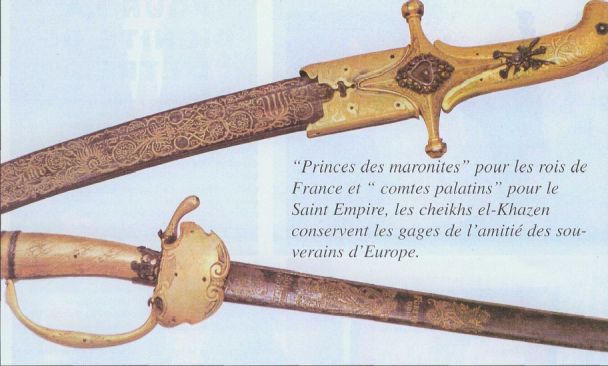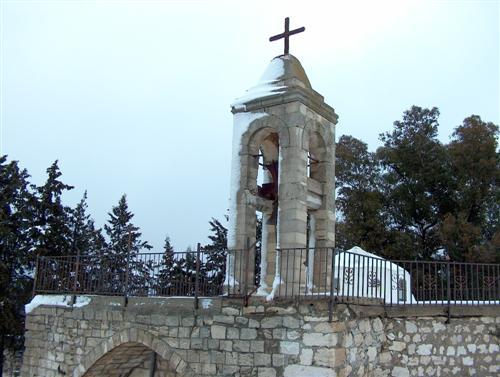 17 August 2005 DAMASCUS
17 August 2005 DAMASCUS
 Syria and Lebanon discussed Sunday the joint cooperation and implementation of in the electricity network cooperation.
Syria and Lebanon discussed Sunday the joint cooperation and implementation of in the electricity network cooperation.
During a meeting with Lebanese Minister of Energy Mohammed Fneish, Electricity Minister Moneib Sa'em al-Dahr described the cooperation between the two states in field of electricity energy as "productive and it brings benefit to both Syrian and Lebanese people." "Syria has been committed to every item in every agreement particularly of this agreement with Lebanon," the minister said.
 AFP, August 16, 2005 BEIRUT -- The Lebanese economy is showing signs of recovery six months after the assassination of ex-premier and construction tycoon Rafiq Al Hariri and the ensuing political crisis that shook the country, analysts say. Hariri had spearheaded Lebanon's post-war economic revitalization and his death in a February bomb blast on the Beirut seafront delivered a fresh blow to an economy already battered by a long-running civil war that ended in 1990. "The disappearance of a man whose name had been linked since 1992 to the reconstruction of Lebanon, which was emerging from 15 years of destruction and war, had a negative psychological impact on investment, production and consumption, although that impact only lasted a limited time," said analyst Marwan Barakat of Audi Bank. The five-time prime minister's sudden death led to political upheaval, international pressure for change in Lebanon and the eventual April withdrawal of Syrian troops after a presence of nearly three decades. However analysts say damaging economic consequences of the turmoil have been lessened by a smooth political transition and promises of reform by a newly elected parliament. "Despite negative indicators in the first half of 2005 compared to those of the preceding year, the Lebanese economy has emerged with relatively limited damage in light of the tragedy," Barakat said.
AFP, August 16, 2005 BEIRUT -- The Lebanese economy is showing signs of recovery six months after the assassination of ex-premier and construction tycoon Rafiq Al Hariri and the ensuing political crisis that shook the country, analysts say. Hariri had spearheaded Lebanon's post-war economic revitalization and his death in a February bomb blast on the Beirut seafront delivered a fresh blow to an economy already battered by a long-running civil war that ended in 1990. "The disappearance of a man whose name had been linked since 1992 to the reconstruction of Lebanon, which was emerging from 15 years of destruction and war, had a negative psychological impact on investment, production and consumption, although that impact only lasted a limited time," said analyst Marwan Barakat of Audi Bank. The five-time prime minister's sudden death led to political upheaval, international pressure for change in Lebanon and the eventual April withdrawal of Syrian troops after a presence of nearly three decades. However analysts say damaging economic consequences of the turmoil have been lessened by a smooth political transition and promises of reform by a newly elected parliament. "Despite negative indicators in the first half of 2005 compared to those of the preceding year, the Lebanese economy has emerged with relatively limited damage in light of the tragedy," Barakat said.BEIRUT, Lebanon, Aug. 14 (UPI) — A Lebanese opposition Parliament member warned Sunday that four more leaders, including himself, will face assassination …
Khazen History


Historical Feature:
Churches and Monasteries of the Khazen family

St. Anthony of Padua Church in Ballouneh
Mar Abda Church in Bakaatit Kanaan
Saint Michael Church in Bkaatouta
Saint Therese Church in Qolayaat
Saint Simeon Stylites (مار سمعان العامودي) Church In Ajaltoun
Virgin Mary Church (سيدة المعونات) in Sheilé
Assumption of Mary Church in Ballouneh
1 - The sword of the Maronite Prince
2 - LES KHAZEN CONSULS DE FRANCE
3 - LES MARONITES & LES KHAZEN
4 - LES MAAN & LES KHAZEN
5 - ORIGINE DE LA FAMILLE
Population Movements to Keserwan - The Khazens and The Maans
ما جاء عن الثورة في المقاطعة الكسروانية
ثورة أهالي كسروان على المشايخ الخوازنة وأسبابها
Origins of the "Prince of Maronite" Title
Growing diversity: the Khazin sheiks and the clergy in the first decades of the 18th century
Historical Members:
Barbar Beik El Khazen [English]
Patriach Toubia Kaiss El Khazen(Biography & Life Part1 Part2) (Arabic)
Patriach Youssef Dargham El Khazen (Cont'd)
Cheikh Bishara Jafal El Khazen
Patriarch Youssef Raji El Khazen
The Martyrs Cheikh Philippe & Cheikh Farid El Khazen
Cheikh Nawfal El Khazen (Consul De France)
Cheikh Hossun El Khazen (Consul De France)
Cheikh Abou-Nawfal El Khazen (Consul De France)
Cheikh Francis Abee Nader & his son Yousef
Cheikh Abou-Kanso El Khazen (Consul De France)
Cheikh Abou Nader El Khazen
Cheikh Chafic El Khazen
Cheikh Keserwan El Khazen
Cheikh Serhal El Khazen [English]
Cheikh Rafiq El Khazen [English]
Cheikh Hanna El Khazen
Cheikha Arzi El Khazen
Marie El Khazen